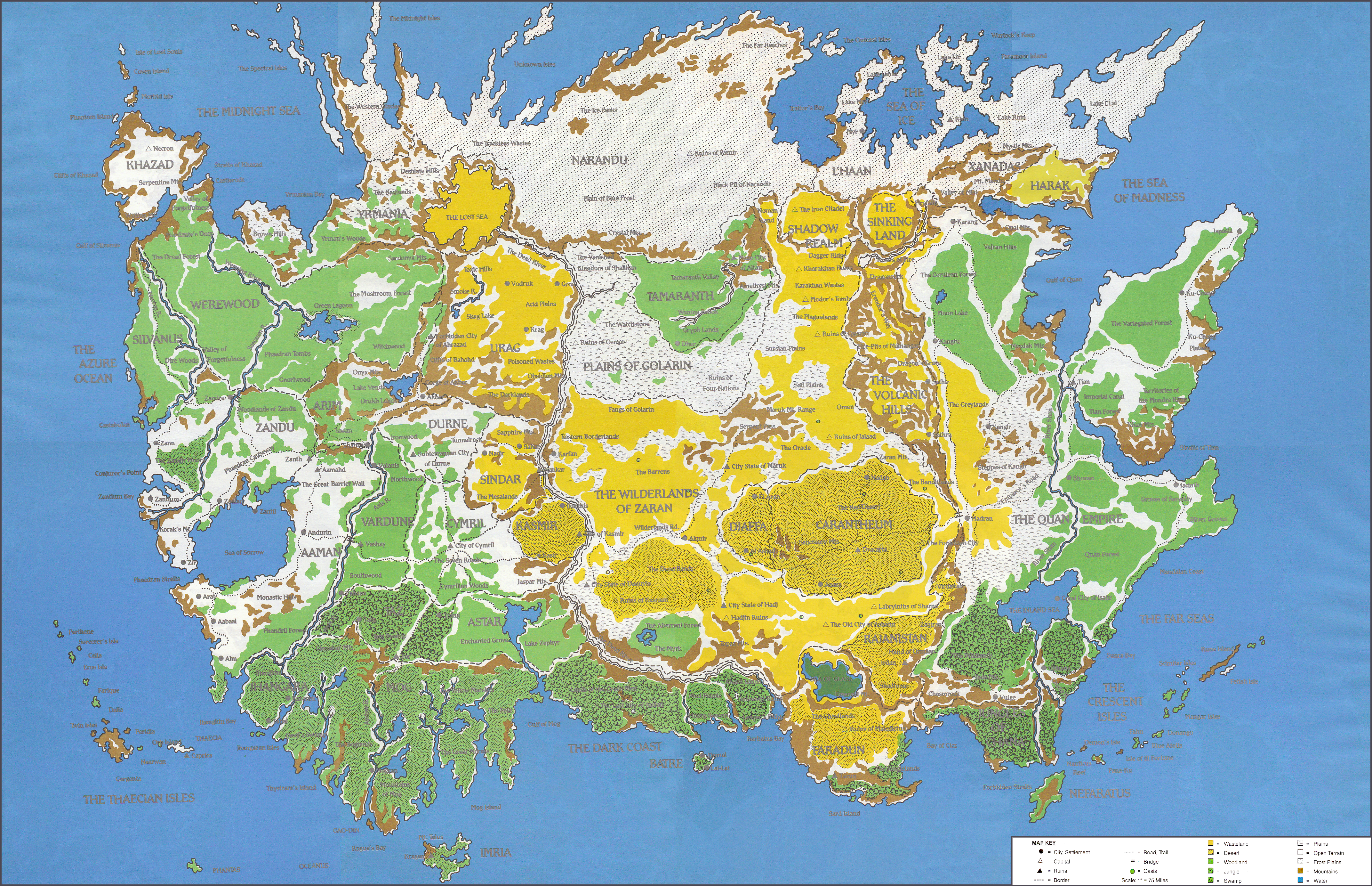Yesterday I was looking at some artwork from Rodney Matthews when it occurred to me that his artwork seemed similar to the style of artwork I was seeing in some of the old gaming magazines, either in advertisements or reviews of Talislanta. Curious, I decided to hit Google and check it out, what I found is actually pretty cool.
The game is still around, the current iteration seems to be kickstarting in the future, working towards making the setting compatible with D&D 5e. However, there are 5 original editions of the game and what is really neat, is that all of the PDFs are free, from the Talislanta Library, of the main website.
Below is a blurb about the game and setting:
I downloaded both the 4th and 5th edition PDFs of the game, started reading through them last night. So far I'm fairly intrigued by both the simplistic system and setting.Talislanta is a truly fantastic place with dozens upon dozens of exotic races and cultures, enough to fuel just about any type of fantasy campaign you’d like to run. Very few of these races are considered inherently good or evil. They are just different peoples with different ways of life. Talislanta itself is actually a continent roughly divided into seven large sections, each of which shares certain characteristics or qualities. There is no “baseline” race that populates most of the world, so you can’t learn about one race and thus have knowledge of how most of the world works.
Every race has its own geographic homeland, although many of them do travel the world and intermingle for business and other purposes. The lack of a standard and overly dominant primary race, like humans for example, really adds to the exotic feel and fantastic nature of the setting. A Talislanta campaign can easily be modified to reflect a variety of gaming styles, from cinematic “larger-than-life” Heroic Fantasy to gritty “by the skin of your teeth” Dark Fantasy. Talislanta focuses on breadth instead of depth. While there are so many different lands and cultures in the book that I won’t even attempt to count them all, due to the time and effort it would take, each of these lands or peoples is described in an average of about 3 pages.
Most sections cover the same common areas: Ancestry, Society, Customs, Government, Magic & Religion, The Arts, Language, Defenses, Commerce, and Worldview. With only about 3 pages per culture, that means that usually each section gets 1-3 paragraphs of detail. Each culture is remarkably compartmentalized in the book, so it is easy to drop into the middle of the book, read about one culture that you have an interest in, and then exit back out without having many hanging references that require you to read many other sections as well.
Gamemasters should view this as a good thing. What it means is that you are given a vast world with limitless possibilities and well-defined cultures. At the same time you are spared the minutiae and laborious detail that other settings focus on. Something that scares many GMs away because they feel trapped or locked in by the extreme amount of definition. You won’t have this problem in Talislanta. Talislanta’s setting is a very large and varied framework, but it is still just a framework. There is ample opportunity for the GM to insert his own settlements, enterprises, and intrigues without feeling they are violating canon or “breaking the setting” at all. It gives you both detail and freedom at the same time, which is quite a trick.
The magic system sounds like it would be very fun for magic-using characters. Magic can be cast from something (tomes, scrolls, etc.) or they can be cast from memory, but the spells are not memorized via Vancian magic, spells are cast on the fly and spells are also not restricted to an actual spell. Casters can essentially create spells, delineating aspects of the spell and outcome, applying necessary modifiers and rolling for success or failure. Casters can also enchant items via spell casting, giving items temporary magic (and in some cases permanent).
The setting boasts something like 100 races and a multitude of archetypes (classes) for characters to choose from, along with a broad and evocative setting, if somewhat dark and perilous. So far I'm enjoying the read through, may have to give it a try some time.
From the website, there is also a cool 7 minute video that does a rundown through the setting. Definitely has that 70s/80s vibe going on.

